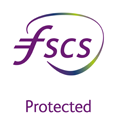
Your new SIPP is here
You can still trade as you always have but there are some changes to how you administer your account.

We're not currently accepting new applications for SIPPs
The pension partnership between IWeb Share Dealing and AJ Bell has ended. Choosing to stay with us means you now have a new Scottish Widows SIPP in partnership with IWeb. There are some changes to how you manage your SIPP account.
This page has useful guidance on how to manage your SIPP going forward.



Pensions are a long-term investment. The retirement benefits you receive from your pension account will depend on a number of factors including the value of your account when you decide to take your benefits which isn't guaranteed and can go down as well as up. The value of your account could fall below the amount paid in. Tax treatment depends on individual circumstances and may be subject to change in the future.
Your SIPP charges
|
Type of charge |
Amount |
|---|---|
|
Type of charge Account admin charge |
Amount Annual 0.25% of the value of your SIPP investments, paid monthly. Max charge £16.50 per month. Waived until November 2028. Your first SIPP admin fee will be collected in November 2028. |
|
Type of charge Transfers (in and out) |
Amount £0 |
|
Type of charge Retirement and accessing your benefits |
Amount £0 |
|
Type of charge UK trading |
Amount £5 for each online trade |
|
Type of charge International trading |
Amount £0 for each online trade (1.5% Foreign exchange charge applies) |
|
Type of charge Dividend reinvestment |
Amount 2% of dividend (max £5.00) |
Managing your Scottish Widows SIPP
You’ll soon be able to manage your SIPP through the Scottish Widows app. In the meantime, here’s how you can manage your SIPP:
-
To make a contribution to your account, complete 1 of our handy online forms.
For personal contributions:
You can set up a one-off or regular payment to your SIPP. For one-off contributions payments the bank details are as follows:Account name: EISL Client Collection Account
Sort code: 23-05-80
Account number: 21862465The payment reference should be your SIPP account code.
For company contributions:
These are set up through our company direct debit contribution form. The form has the option of both one-off and monthly payments.
Company contributions must be from a limited company and you must be the limited company business owner or one of the directors. We don’t accept contributions from a third party (such as your spouse, parent or grandparent) or from any other employer. -
You’ll soon be able to manage your SIPP through the Scottish Widows app, including making changes to things like your contributions and beneficiaries.
In the meantime, if you need to make any changes, you’ll need to contact us.
-
If you’d like to switch your pension to us, just complete our online transfer form - one form for each pension you want to transfer.
If you are transferring to another provider, you’ll need to contact your new provider to request the transfer.
While we don’t charge for transfers in or out, your other provider might, it’s worth checking all fees with both providers before requesting a transfer. We don’t provide advice, so if you are unsure about transferring your pension, please speak to a suitably qualified financial adviser. There will normally be a charge for that service.
Here are some examples of why you wouldn’t be able to transfer your pensions to our SIPP:
Overseas or active pensions
- You want to transfer a pension that’s with an overseas provider.
- An employer or someone other than you is currently paying into the pension you want to transfer. Although you can transfer partial amounts from an active pension (called a partial transfer), be careful you don’t inadvertently stop or cancel any active employer contributions.
Pensions with benefits
- The pension is with a final salary (defined benefits) scheme.
- You have safeguarded benefits within your existing pension – this may be a Guaranteed Annuity Rate (GAR), Guaranteed Conversion Option (GCO), Section 9(2B) rights, or a Guaranteed Minimum Pension (GMP).
- You have other valuable features within your existing pension you don’t want to lose by transferring – this includes protected tax-free cash and any protection such as lump sum and death benefits known previously as Lifetime Allowance protection.
Drawdown and other considerations
- The pension is already in drawdown – this means you’re taking an income, or you’ve taken a tax-free lump sum, from the existing pension.
- The pension is currently subject to a bankruptcy order, pension earmarking or sharing order, or other receiving orders.
- Your pension has been set up using ‘disqualifying’ pension credits from a pension sharing order (a pension sharing order has been applied to a pension already in payment or income drawdown).
Please make sure pensions you're transferring:
- are from a UK-based provider,
- are at least £1 in value,
- have not already entered into drawdown. For example, you’ve not taken an income or a tax-free lump sum from them,
- don’t have any valuable features or guarantees that you’d potentially lose upon transferring.
You’ll need your National Insurance number and the provider’s name, policy number and value of your pension for each pension transfer you request.
If you are over 50 and requesting a transfer to be able to access your pension savings, you should be aware of the support that is available. Being provided with guidance and advice could help you with your decisions.
-
If you’re looking for more information on your retirement options, our helpful guide can assist you in making an informed decision.
SIPP Retirement Guide (PDF, 300 KB)
The earliest you can usually access your pension savings is age 55 (rising to 57 from April 6, 2028). It’s worth considering if this is the right time for you to take your benefits. Generally, the longer you can leave your pension untouched, the better. There’s no maximum age to retire. So, although you can’t continue contributing into your pension over the age of 75, you can keep your pension intact as long as you like. It’s also possible to take a combination of these options.
- Leave it invested
You can leave some, or all, of your pension savings invested for now.
This might be the right option for you if you’re still considering your options or have other income to rely on for the time being. - Take it as cash
You can take some, or all, of your pension savings as cash. 25% of that can be tax-free.
Depending on how much you take as cash in one go, the tax on it could be much higher than you’re used to. - Take it as regular income (Annuity)
You can take up to 25% of your savings as tax-free cash and then use some, or all, of your remaining pension savings to buy a guaranteed income for life. This is also known as an annuity.
You can choose different features and options to protect your income for your family if something happens to you.
Please note, our Self Invested Personal Pension (SIPP) doesn’t offer an annuity option, but we can help you find a provider that does. - Take it as flexible income (Drawdown)
You can take up to 25% of your savings as tax-free cash before using some, or all, of your remaining pension savings to enter into a flexible income arrangement. This is known as income drawdown.
This allows you to take the money from your pension savings as taxable income, leaving it invested until you need it.
If you’re ready to make a decision on how you want to take your retirement, Scottish Widows are here to help. They’ll provide useful checklists and information to help you decide how and when to retire.
- Leave it invested
-
If you’ve decided that you’d like to change your regular income, complete our short form and we’ll be in touch.
You can update the following at any time.
• The amount of your pension income.
• Payment date.
• Payment frequency.
• Bank details.
Be aware that any of the above changes will usually take up to 10 working days to complete.
If you're increasing your income payments from your SIPP, be aware of the following:
• Sustainability of funds: Ensure you have sufficient funds to support the increased withdrawals over the remaining term of your retirement. Drawing too much too soon could deplete your pension earlier than expected.
• Tax Implications: Increasing your income may push you into a higher tax bracket. This could result in a larger portion of your income being taxed at a higher rate. We recommend seeking tax advice to understand the full impact.
• Investment suitability: Review your investment choices to confirm they remain appropriate for your needs. Your investment strategy should align with your income requirements and retirement needs.
If you need any help and guidance, you can get this free through Pension Wise. If you need any financial advice, we recommend you speak with a financial adviser. They'll charge you for this service. You can visit Unbiased or Vouchedfor to find a financial adviser near you.

We're all part of Lloyds Banking Group, which incorporates many well-known companies including Halifax, Scottish Widows, Halifax Share Dealing Limited and Embark Investment Services Limited.
Our retirement partner for our pensions is Scottish Widows, who have more than 200 years experience in pensions and retirement.
Important documents
-
Embark Person Pension - amendment - scheme rules 27 March 2015 (PDF, 9.6 MB)
Embark Personal Pension - Deed of Amendment - 12 August 2020 (PDF, 1.5 MB)
Embark Personal Pension - Scheme change operator - 15 Nov 2016 (PDF, 645 KB)
Embark Personal Pension- Deed of Amendment - 29 Nov 2022 (PDF, 178 KB)
Embark SIPP - Scheme change of name - 21 March 2017 (PDF, 521 KB)
More support

Investments with Halifax Share Dealing Limited are protected up to a total of £85,000 by the Financial Services Compensation Scheme. This limit is applied to the aggregated total of any stock or cash held across the following brands that we administer.
This is in addition to any other savings deposits you may hold across Lloyds Banking Group.